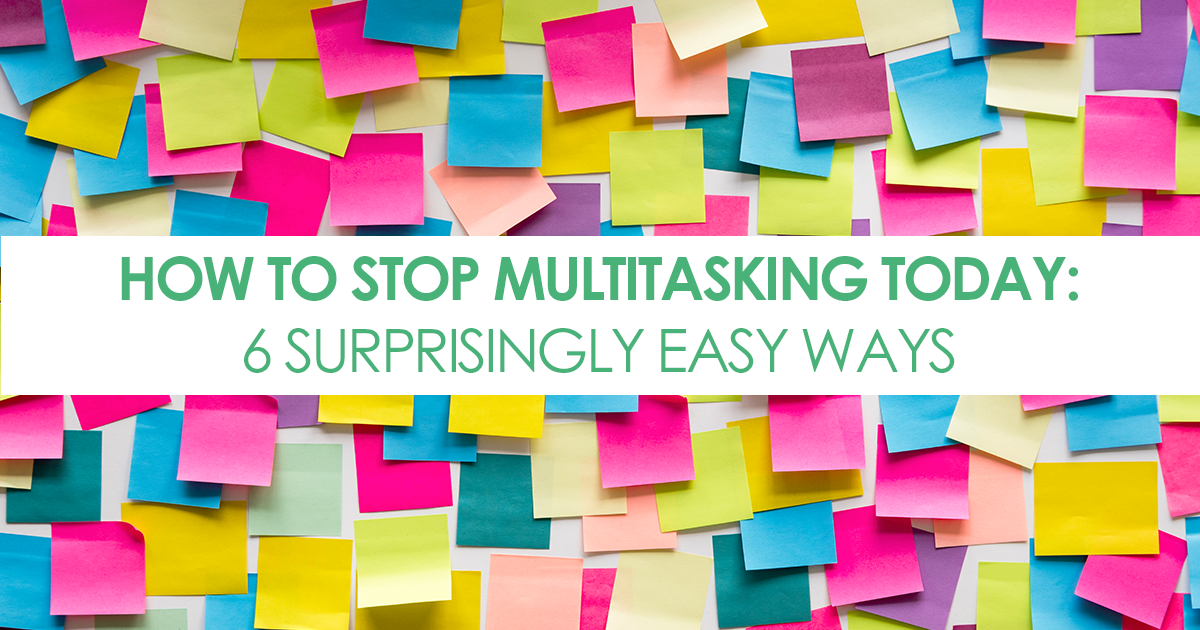In the opening session of our leadership training program, we ask each participant to share three strengths and three development areas. Inevitably, several team members say they want to improve at multitasking. They’re typically concerned that they don’t multitask enough. But increasingly, I have realized the reverse is true. Bad multitaskers are some of the most productive team members we have.
We’ve all read about the evils of multitasking, and it turns out we may actually lower our IQ points the more we click and scroll. In extreme cases, multitasking can cause stress, insomnia, depression, and even death. There are some benefits to multitasking, but overall, experts agree that multitasking is bad for the brain.
And, in fact, it is technically impossible. Our brains are designed to focus on one thing at a time, so multitasking really means you’re jumping from one task to another, then back again. Numerous research studies show that these switches takes time and energy. As a result, multitasking makes it more difficult to organize thoughts and reduces the quality of work.
Okay, okay. You’ve heard this all before. But here’s the problem: The solutions for quitting multitasking seems impossible to adopt.
Yes, I know I should develop a habit of meditating every day. I haven’t, so sue me. Yes, I should adopt one of the numerous productivity systems promoted by best-selling books, and I have, to some degree. But I still succumb to the allure of multitasking.
And the allure is irresistible, especially for entrepreneurs and CEOs. A million different people and things demand my time and attention. My clients want quick responses — can I make them wait, without jeopardizing my business? I am responsible for my team members’ success — how can I ignore them when they need me? In other words, how can I shut off the distractions, when the distractions are a critical part of my job?
I recently decided I needed some anti-multitasking strategies that didn’t require me to upend my entire schedule, adopt a new habit, or completely change my way of working. Here are six that have worked for me. You don’t have to commit to doing them for a month, a week, or even a day. Just pick one, try it, and see how it feels.
1. Schedule 15-minute and 45-minute meetings
For some reason, we have decided that meetings are 30, 60, 90, or 120 minutes long. These are lovely multiples of 30, but lots of things can be done in less time.
By scheduling 15- and 45-minute meetings, I’ve found I can ensure that participants keep the agenda tight, focus on the most critical issues, and end on time. All of us then have extra time to focus on other things.
2. Stop multitasking in ONE meeting
Commit to sitting through one meeting without checking your phone. Or, if you’re in a meeting and feel the urge, commit to fighting that one urge. I recently did this in a two hour meeting, and was surprised to see the ideas that bubbled to the surface when I wasn’t expending my excess brain power checking email.
3. Schedule one 30-minute email break
Experts recommend scheduling your email-checking time, and ignoring your inbox the rest of the day. But, again, that requires you to upend your schedule, and it’s not always feasible, especially in a client services business. Periodically, however, I experiment by committing not to check email or Skype for 30 or 60 minutes. It’s almost shocking to see the creativity that blossoms during these focused times.
4. Delete, delete, delete your emails
You can’t stop the email tide, but you can slow it down. Experts recommend immediately deleting any email that doesn’t directly impact your work. Start small. Try deleting just a handful of communiques you’ve kept as FYIs, for example, and storing the information elsewhere.
5. Use video for calls
It’s much harder to juggle several tasks when a colleague is in front of you; this is true virtually as well. Having to keep eye contact via Skype or Zoom means your opportunities for distraction are limited, and you can concentrate fully on the task at hand.
6. Take two deep breaths
If you’ve already developed a regular meditation habit, congratulations. What about the rest of us? When I’m feeling unfocused, I try to sit still and take five deep breaths. It’s surprisingly difficult. If you’ve never tried meditation or yoga, I recommend starting with two or three deep breaths: in through the nose, out through the mouth. Deep breathing lowers blood pressure and helps clear your mind, both of which lead to lowered stress in the workplace.
This article was first published in Inc.


